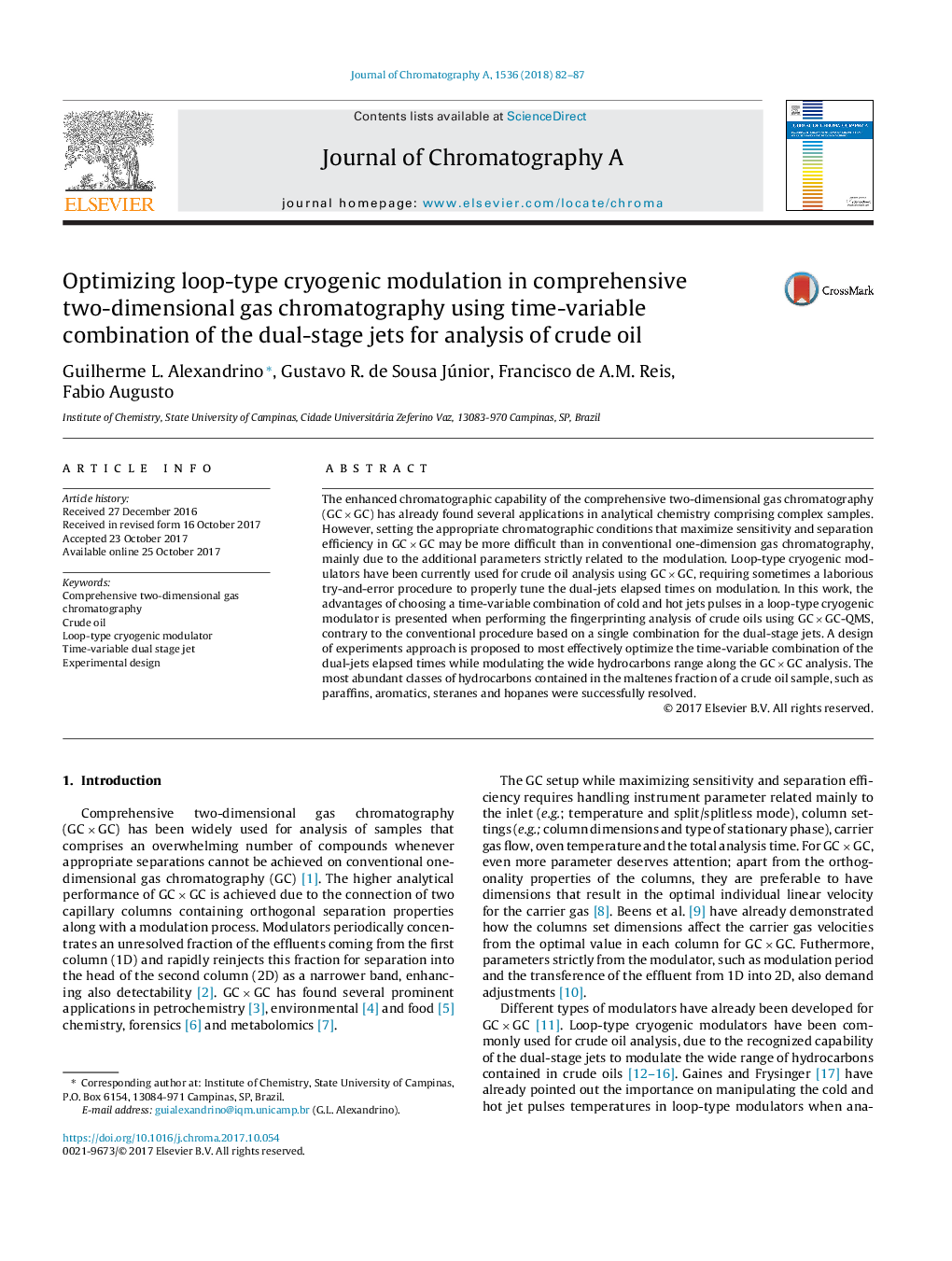| Article ID | Journal | Published Year | Pages | File Type |
|---|---|---|---|---|
| 7608880 | Journal of Chromatography A | 2018 | 6 Pages |
Abstract
The enhanced chromatographic capability of the comprehensive two-dimensional gas chromatography (GCÂ ÃÂ GC) has already found several applications in analytical chemistry comprising complex samples. However, setting the appropriate chromatographic conditions that maximize sensitivity and separation efficiency in GCÂ ÃÂ GC may be more difficult than in conventional one-dimension gas chromatography, mainly due to the additional parameters strictly related to the modulation. Loop-type cryogenic modulators have been currently used for crude oil analysis using GCÂ ÃÂ GC, requiring sometimes a laborious try-and-error procedure to properly tune the dual-jets elapsed times on modulation. In this work, the advantages of choosing a time-variable combination of cold and hot jets pulses in a loop-type cryogenic modulator is presented when performing the fingerprinting analysis of crude oils using GCÂ ÃÂ GC-QMS, contrary to the conventional procedure based on a single combination for the dual-stage jets. A design of experiments approach is proposed to most effectively optimize the time-variable combination of the dual-jets elapsed times while modulating the wide hydrocarbons range along the GCÂ ÃÂ GC analysis. The most abundant classes of hydrocarbons contained in the maltenes fraction of a crude oil sample, such as paraffins, aromatics, steranes and hopanes were successfully resolved.
Related Topics
Physical Sciences and Engineering
Chemistry
Analytical Chemistry
Authors
Guilherme L. Alexandrino, Gustavo R. Júnior, Francisco de A.M. Reis, Fabio Augusto,
